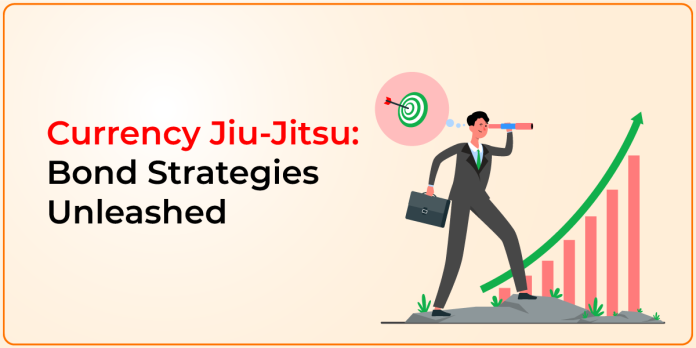Investing in foreign markets is an exhilarating adventure, but the thrill can quickly turn into chills when you encounter the formidable enemy – currency risk. This unpredictable creature can devour your hard-earned gains, leaving you wondering if you took a wrong turn on the financial map.
Enter the Unlikely Hero
Before you pack your bags and retreat to home turf, consider this: foreign bonds might be your unlikely currency-taming sidekick! These seemingly stoic instruments, often overlooked for their lack of pizzazz, could hold the key to navigating the choppy waters of exchange rates.
How Bonds and Currency Play the Tango
Let’s imagine you’re an American investor eyeing those juicy German bunds. You buy them for their interest payments, but a worry gnaws at you: what if the euro weakens against the dollar? Suddenly, your euros might buy fewer greenbacks, shrinking your returns.
But here’s the magic trick: as interest rates in Germany rise (making bunds less attractive), their price dips. This acts like a seesaw. The bond price falls, but the euro might rise to compensate for the decreased investment appeal, as higher interest rates will attract more investors for the Euro currency. This counterbalancing act potentially offsets losses from a falling euro, acting as a makeshift currency hedge.
The Maths Behind the Magic
Let’s dive into the numbers behind our hypothetical German bund scenario:
Initial Investment:
You purchase €10,000 worth of German bunds when the euro-dollar exchange rate is 1.20 (meaning 1 euro buys 1.20 dollars).
Your initial investment in dollars is €10,000 x 1.20 = $12,000.
Interest Rates Rise, Currency Strengthens
Interest rates in Germany increased, causing bund prices to fall by 5%.
The euro appreciates against the dollar to 1.25 (meaning 1 euro now buys 1.25 dollars).
Your New Position:
Your bunds are now worth €9,500 (€10,000 – 5%).
However, when converted back to dollars, they are worth €9,500 x 1.25 = $11,875.
Net Loss:
You’ve incurred a loss of $125 ($12,000 – $11,875).
However, this loss is partially offset by the euro’s appreciation, as you’d have lost more if the euro had weakened instead.
Think of it as a currency tango: when interest rates and bond prices move in one direction, the currency might sashay in the opposite, potentially negating some of the currency risks. It’s not a perfect choreography, factors like inflation and economic conditions can throw a wrench in the tango. And remember, hedging comes with its own costs.
Read: All you Need to Know about Inflation
Disclaimer: This blog has been written exclusively for educational purposes. The securities mentioned are only examples and not recommendations. It is based on several secondary sources on the internet and is subject to changes. Please consult an expert before making related decisions.


